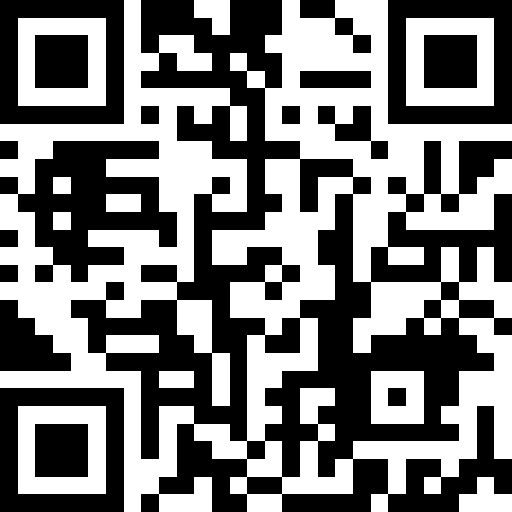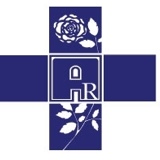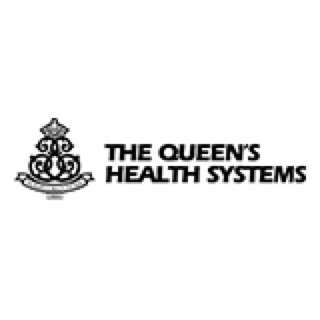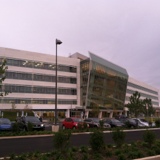Information
-
Audit Title
-
Document No.
-
Client / Site
-
Conducted on
-
Prepared by
-
Location
-
Personnel
Housekeeping
-
High Reach Horizontal Surfaces are Clean 07.00.00
-
Surfaces are uncluttered and free of dust 07.00.00
-
Sprinkler Heads and Smoke detectors are free of dust and dirt. 11.04.06
-
Vents are free of dust and dirt. 07.00.00
-
Environmental Service carts not left unattended in Corridors. (Hospital Only)
-
Empty pop cans are not stored with patient care items. 07.03.07
-
Vending Machines are clean. 07.03.03
-
Wheels on carts are clean and free of dust and/or debris 07.00.00
ENVIRONMENTAL
-
Doors are not propped open. 11.04.05
-
Ceiling tiles are not stained, missing, or broken. 07.03.04
-
In sprinkled areas, supplies are stored 18 inches from ceiling. 11.04.06
-
Items are not stored within 30" directly in front of electrical panels. 1910.303/NFPA
-
Elevator Areas, Corridors, and Egress routes are free of equipment and any obstructions. 11.04.08
-
Furniture and Equipment removed if in poor condition (cracked, torn, broken, ect) and Maintenance notified. 07.00.00
PATIENT CONFIDENTIALITY
-
Computers are " Logged-off" when staff is not present.
-
Monitor Screens are oriented to protect patient confidential information.
-
Doors are locked to Medical record Storage areas. 10.00.04
-
Check all areas for HIPPAA violations (check trash cans, patient charts, test results, etc)
WORK PRACTICES
-
Staff, Doctors, Volunteers, and Students wearing ID at all times. 04.00.13
-
Proper Lifting Equipment available if needed. (Hospital Only)
-
Only Hospital approved hand lotion is available and in use.
LIFE SAFETY
-
Exit Signs clearly visible and working properly. NFPA 99
-
Fire doors and Emergency exits are unobstructed. Fire extinguishes and fire alarm pull stations and accessible (Not Blocked). 11.04.05/11.04.06
-
Staff is familiar with the location of fire extinguishers, medical gas shut-off valves (if applicable), fire alarm pull stations (if applicable) and notification procedures if there was an Emergency situation in the department. 11.00.02/11.07.01
STORAGE ISSUES
-
Items are not left unattended in corridors. 11.04.08
-
Items are not being stored on the floor. 11.04.08
-
No items (clean or sterile) stored under sinks. In non-patient areas, no paper items or non-labeled chemicals are stored under sinks. 07.02.04/07.02.07
-
Items are not to be stored within the splash zone of the sink (3'). 07.03.05
-
All linen items are stored properly-clean with clean, and dirty with dirty, and covered. 07.04.01/07.04.03
HAZARDOUS MATERIALS AND WASTE
-
Staff knows how to access MSDS information. 11.05.04
-
Tank of Compressed gases (oxygen) are properly stored, not left on empty wheelchairs, stretchers, or left in corridors. Only 1 bottle is allowed to be stored at the Nurse's Station. 1910.253/NFPA 99
-
All Biohazard containers are handled and labeled appropriately. 49 CFR
-
In areas using hazardous materials, emergency phone numbers are posted in the case of a chemical spill. 1910.120
-
All chemicals properly labeled and stored. 11.05.04
-
If eyewash stations are in the department, they are inspected and operated weekly to verify working order, and are unobstructed. ANSI Z358.1
-
Biohazards are disposed of in the proper containers-sharps, bio-bags, etc. 07.03.07/49 CFR 171/1910.1030
-
If a department uses a high level disinfectant for equipment sterilization (Cidex OPA), daily checks are completed and logged.
-
Food and Beverages are not stored or consumed in areas where chemicals are used or stored. 1910.120
INFECTION PREVENTION
-
Staff food/drink items are not in patient care areas (i.e. nurses stations). Staff do not apply lip products in patient areas. 07.01.10
-
Staff belongings are not stored in patient care areas.
-
Sterile/Clean equipment stored (6" from outside wall, 18" from the ceiling, and 6" from the floor) and rotated appropriately. 07.02.04/07.02.07
-
Sterile/Clean equipment not stored together with "dirty" utility items or in traffic areas. 07.02.04/07.02.07
-
Specimens are transported correctly (gloves are used when transporting to soiled utility room, specimens are in bio-hazard whenexiting the department). 1910.1030
-
Linen is covered during transport. 07.04.01/07.04.03
-
All clean linen carts are covered, or in an enclosed room. All dirty linen hamper lids are closed. 07.04.01/07.04.03
-
Areas under sinks show no evidence of mold/mildew growth.
-
Opened and outdated nourishments are removed from refrigerators. 07.02.07
-
Refrigerators and freezers for specimens are properly labeled with a biohazard label. 07.03.07
-
Refrigerated specimens are not stored in with refrigerated food items, and patient food is not stored with staff food in refrigerators. 07.00.00/07.03.07
-
Refrigerators are periodically cleaned inside and out.
-
Dirty Equipment is cleaned before being sent to CPD.
-
PPE is available and used properly. 07.01.01/OSHA 1910.1030
-
Alcohol based hand hygiene products are available for staff. 07.03.05
-
Soap and hand towels are available at each hand washing sink. 07.03.05
-
Sterile supplies are not expired and are labeled with a lot number. 07.02.07
-
No evidence of pests or entranceways for pests. 07.05.01
-
No evidence of poisons used to exterminate pests. 07.05.02
-
Brushes used for cleaning medical equipment evaluated and cleaned daily.
-
Upon opening an in-house processed sterile tray or set, the chemical indicators are validated. 07.02.04
MEDICAL EQUIPMENT
-
Preventive maintenance stickers are up-to-date. 11.08.06
-
ERT carts are checked daily ( seals are not broken).
-
ERT Carts are plugged into red outlets. 11.08.04
-
Emergency equipment/supplies (ambu bag, Ephinephrine, Benadryl, airways) are monitored monthly for expiration.
-
Blanket warmer temperature set at 130 degree F (if not automatically monitored)
-
IV solutions in volumes of 150 ml or greater are warmed to 104 degree F for no longer than 14 days
-
Pour bottle solutions are warmed to 150 degree F for no longer than 3 days
-
All comfort bath warmers are set to 125 degree F +5 degrees
-
Non-functioning electrical and patient care equipment removed from service and Clinical Engineering notified
-
Your HEPA hoods are present, labeled correctly for your department, and plugged in. The hood itself is free from damage or tears.
ELECTRICAL
-
Extension cords are not in use (power strips are permitted). 1910.303/1910.334/NFPA 99 & 70E
-
Electrical equipment (including outlets) are in good repair and are secure. 1910.305/NFPA 70E
MEDICATION SAFETY
-
Medications are secure. 25.01.03
-
Medications are not outdated. 07.00.00
-
Medications are properly labeled with the name of the medication, manufacturer, concentration, lot number, and expiration date in month/day/year format. 25.01.07
-
Multi-dose vials are labeled with the initials of person who opened the vial, and the expiration date (28 days after opening). 07.00.00
-
Pill crushers are clean.
-
Medication refrigerator temperature logs current?
RADIATION SAFETY ISSUES
-
Staff members are wearing appropriate badges (radiation dosimeter). 19.00.01
-
Appropriate shielding is available for patients, staff and visitors. 19.00.01
-
Rooms housing radiation sources are labeled.
-
Lead aprons and gloves are worn when necessary. 19.00.01
-
Lead apron checks are completed annually. 19.00.01
PATIENT CARE AND NURSING (HOSPITAL ONLY)
-
All audible alarms are set on patient care equipment.
-
Emergency pull cords are 4 inches from the floor and free hanging.
STAFF INTERVIEWS (Instructions: Interview 3 staff members(from different shifts if possible) with the below questions)
-
How can you access an MSDS sheet?
-
Do you know who the Safety Officer is and how to contact him/her?
-
How are employees notified if our disaster plans are activated?
-
Where are the nearest fire extinguishers and AND fire alarm pull station located?
-
How is the fire code announced overhead?
-
Where is the medical gas shutoff valve located?









